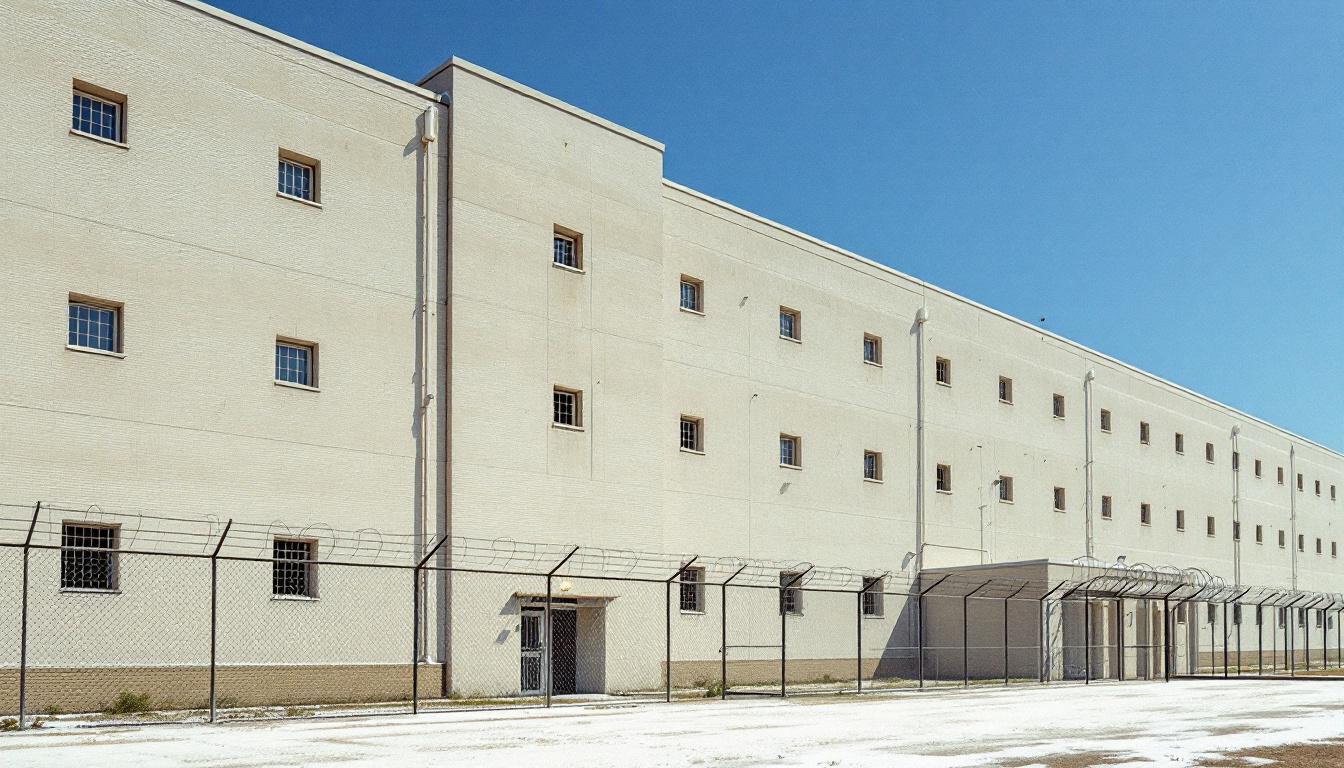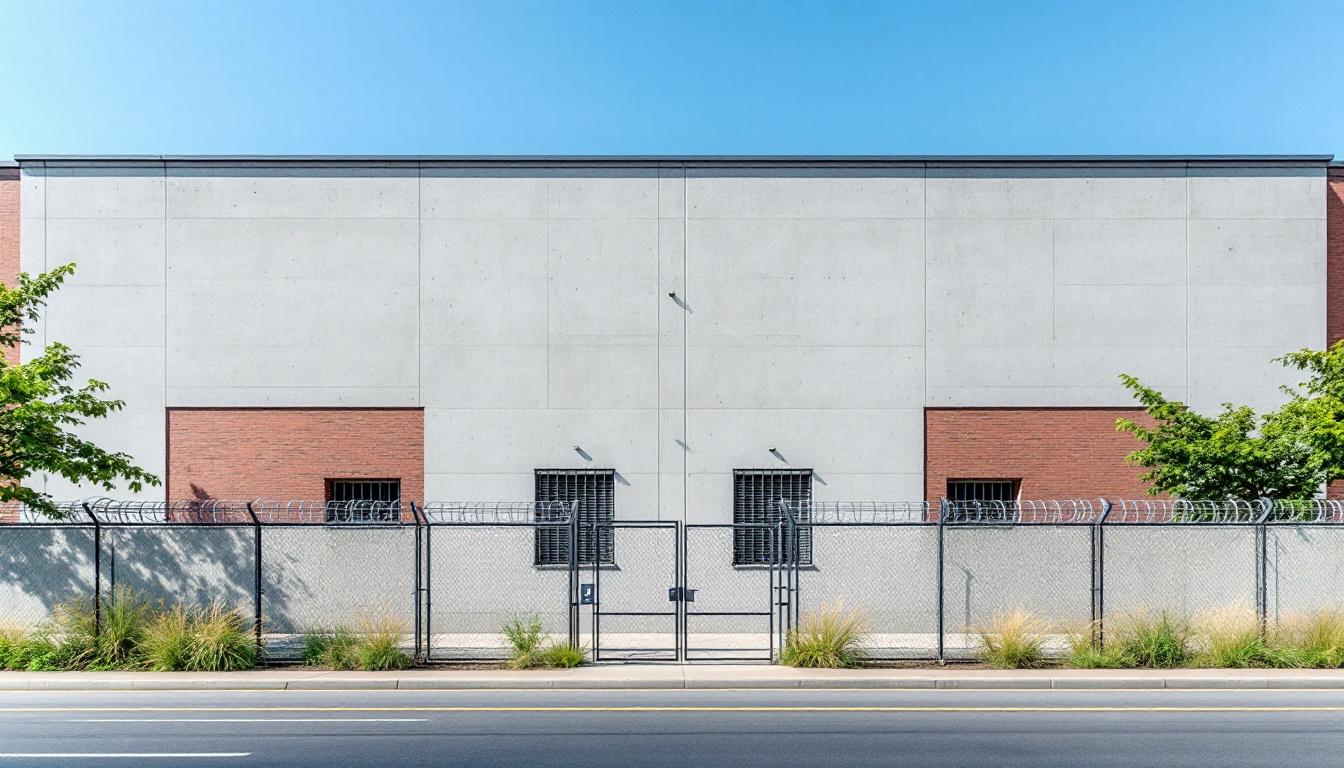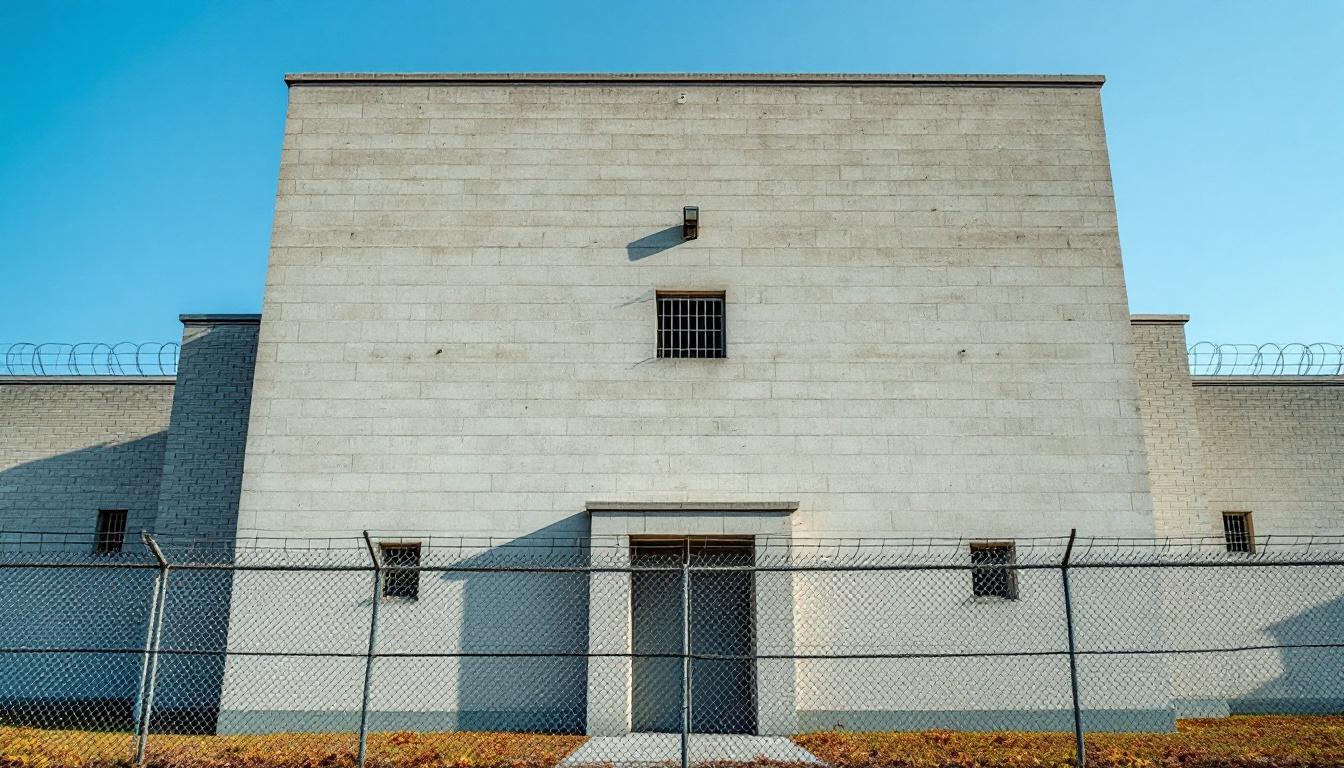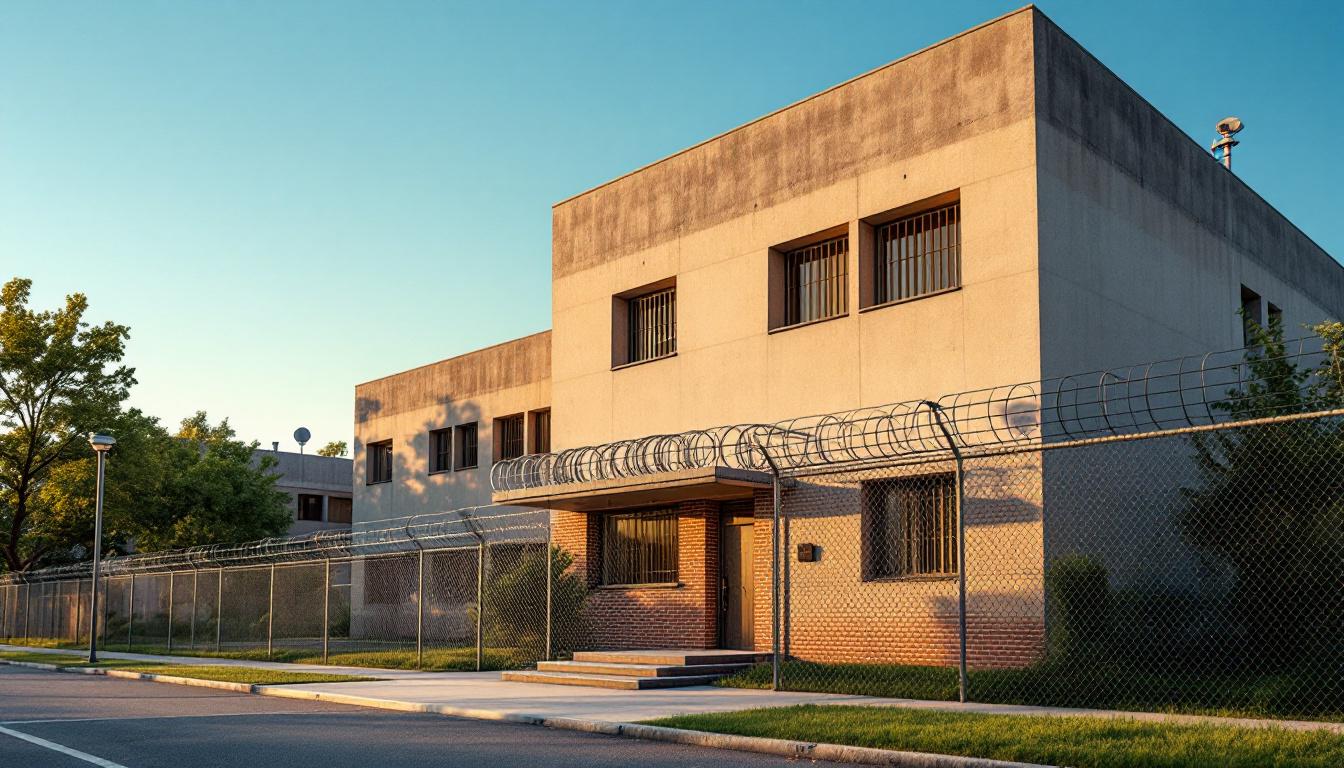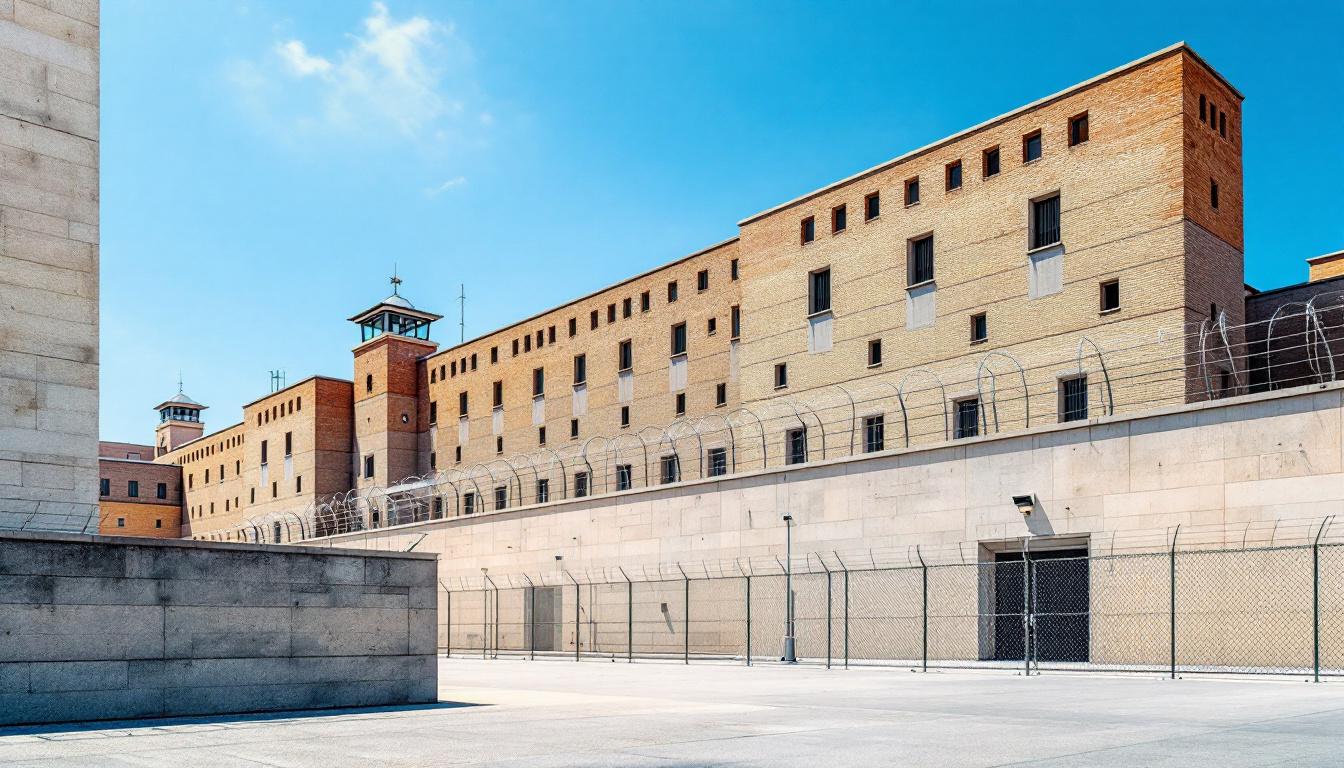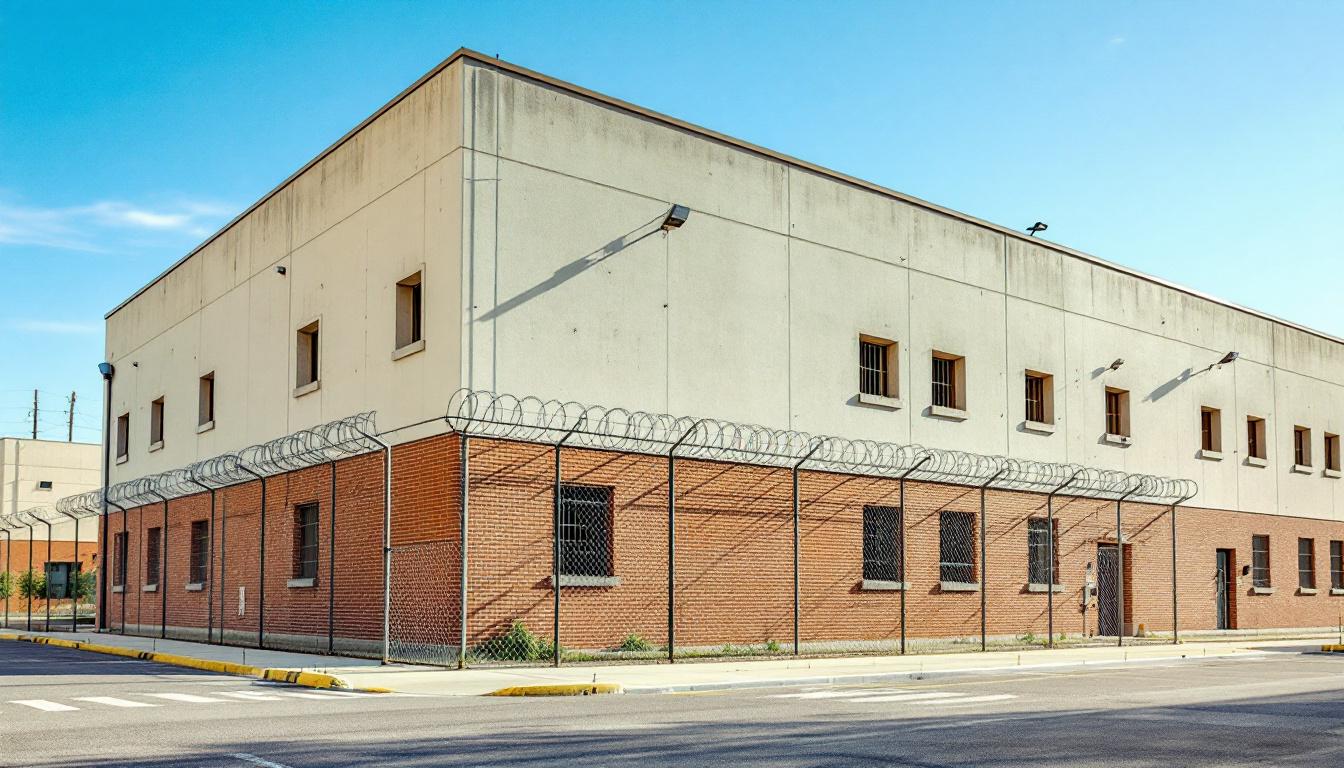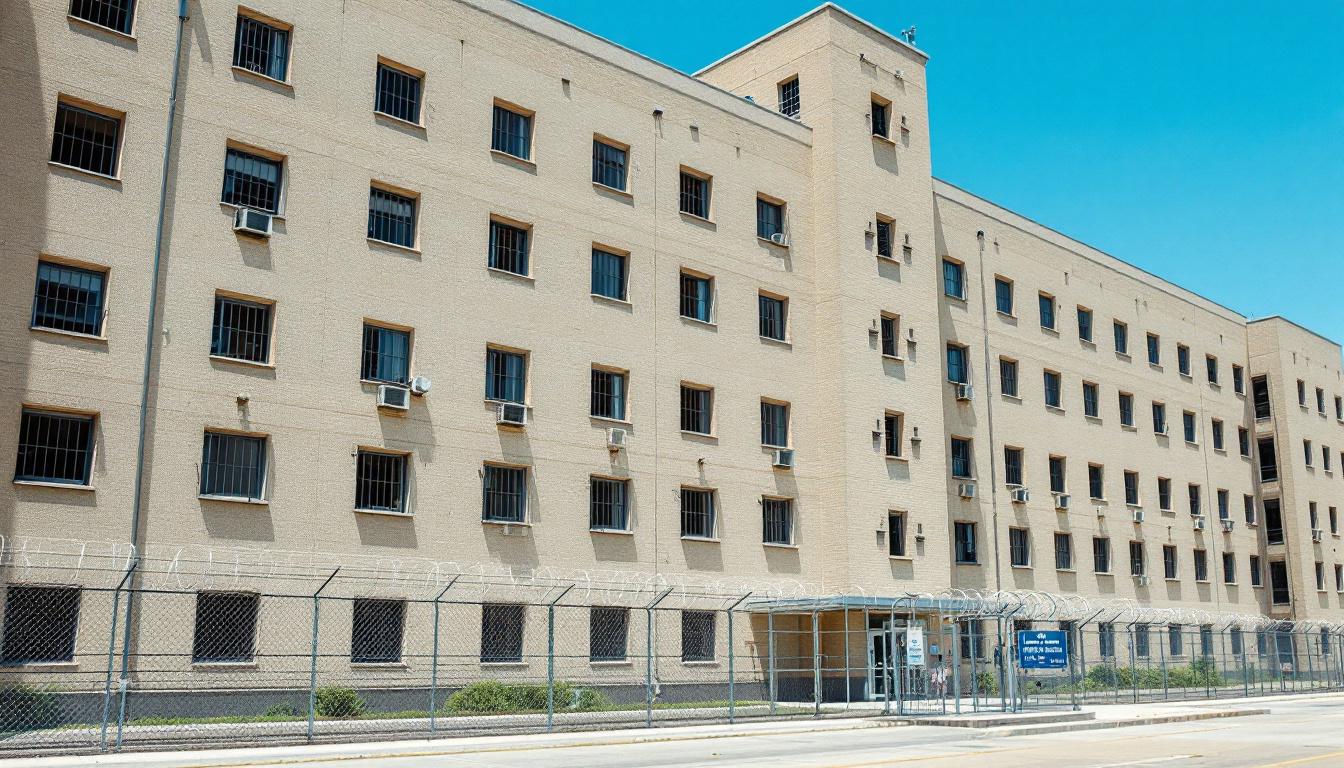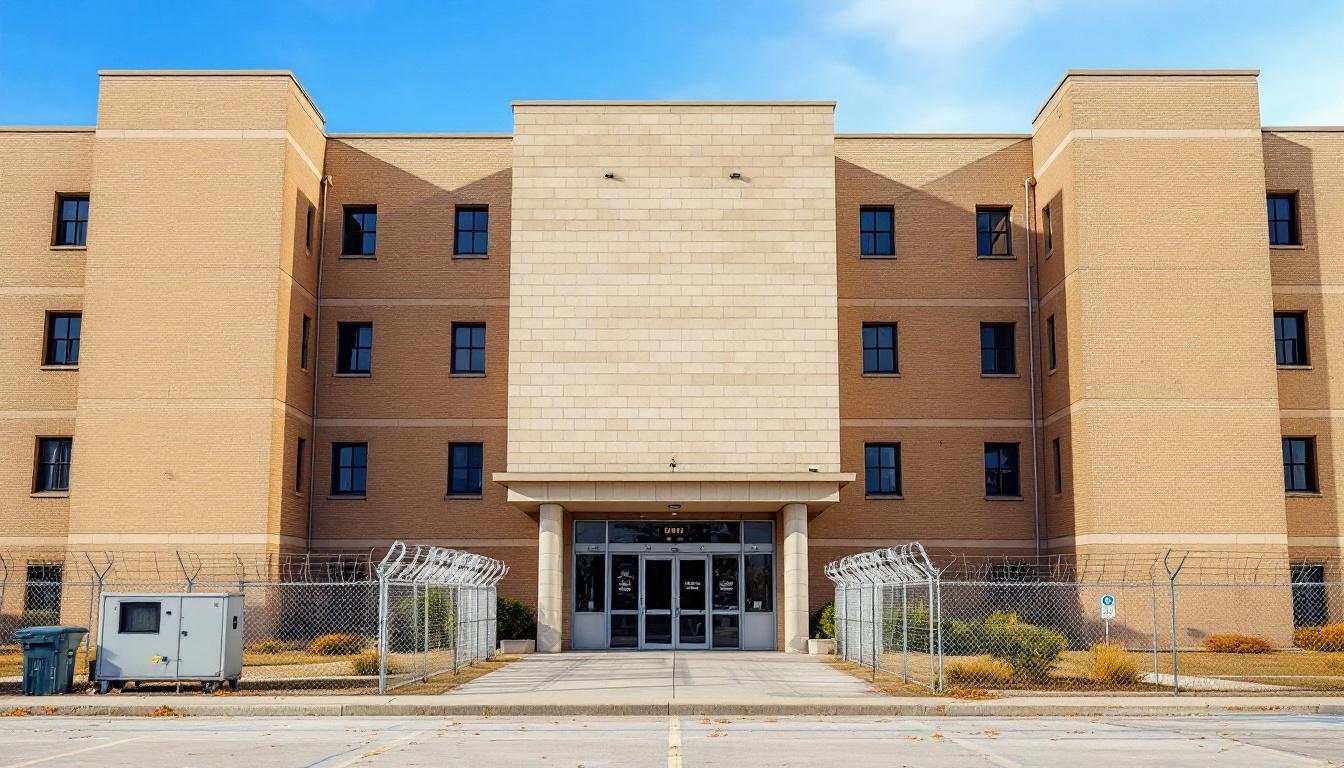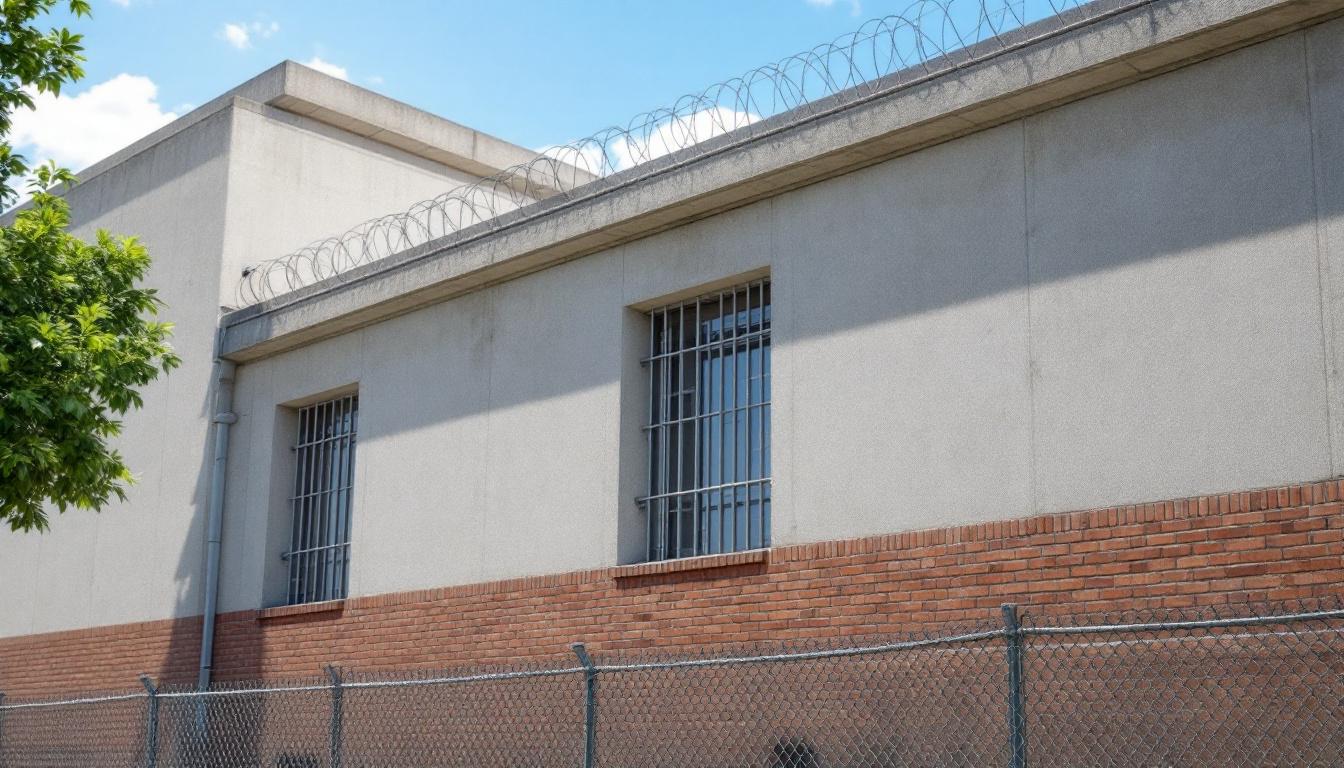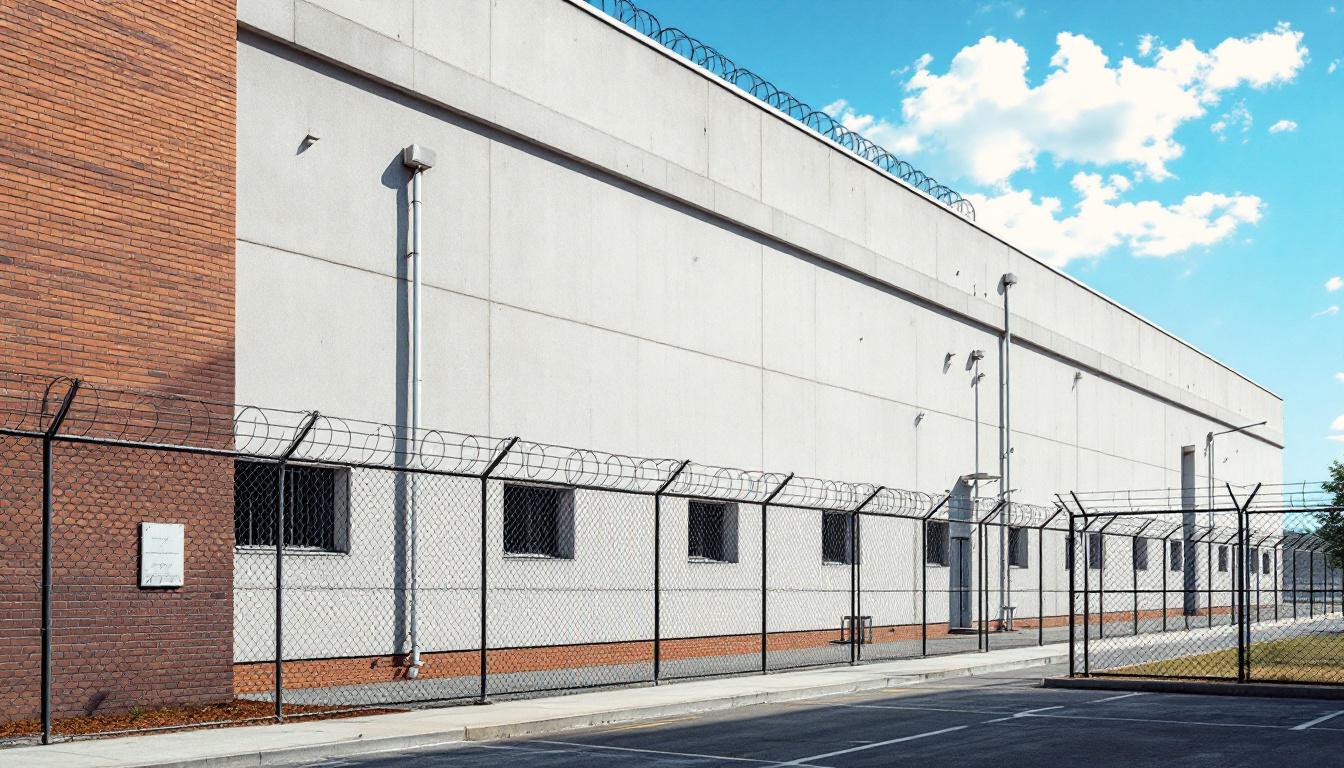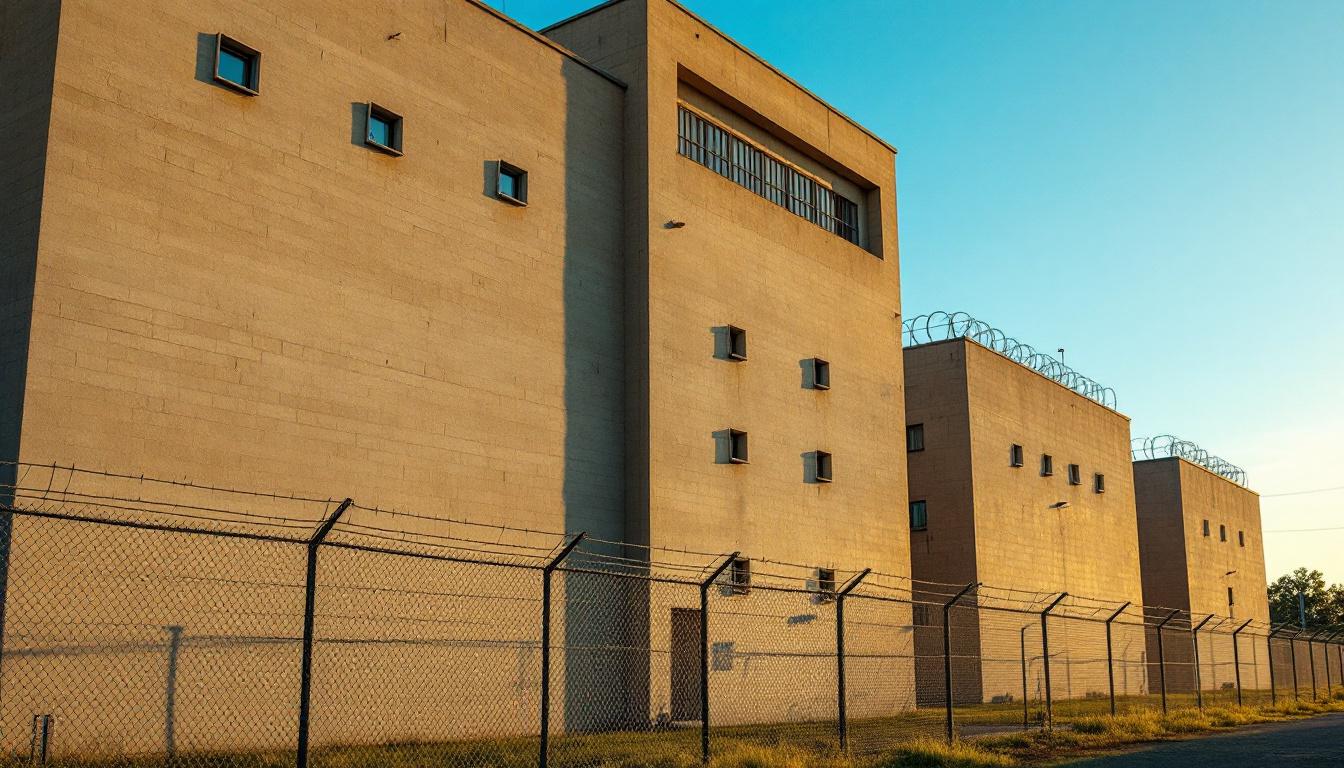
Quick Navigation
How to contact an inmate at Sugar Pine Conservation Camp #9
This comprehensive guide will walk you through how to connect with an inmate at Sugar Pine Conservation Camp #9. Follow the steps below to find an inmate and send letters and photos:
- Search for the inmate using our search tool below
- Create your account or log in to Penmate
- Write your message (up to 6,000 characters)
- Send instantly - inmates receive printed copies daily
Find an Inmate
Search for an inmate to start communicating today
Tip: You can search by first name, last name, or inmate ID number
To contact a person at Sugar Pine Conservation Camp #9 start by searching for the person on the official facility website. Perform a search by following these steps:
- Step 1: Enter their first name and last name into the search form and click "Search"
- Step 2: Locate their inmate record
- Step 3: Write down their Inmate ID and any housing information provided
Important! Be sure to enter the person's full name. Nicknames should not be used.
How to Send Messages to Inmates

You can use your phone or computer to send emails, letters, and photos to an inmate. Messages are sent electronically to inmate tablets or kiosks at the facility. If you would like to send a message, start by searching for an inmate at Sugar Pine Conservation Camp #9.
Sending Photos and Postcards

A great way to send love and support to a loved one at Sugar Pine Conservation Camp #9 is to send photos and postcards. It only takes a few minutes to send photos from your phone and it makes a huge difference. You can also mail postcards with words of support and inspiration, or design your own postcard for special moments like birthdays and holidays.
Important! Be sure not to send any explicit photos or they may not be approved by the facility. You can also use a photo printing app like Penmate to make sure your photos are printed at the correct size (4x6 or 3x5) and are mailed according to the rules and regulations of Sugar Pine Conservation Camp #9.
Frequently asked questions about Sugar Pine Conservation Camp #9
-
How long does it take to deliver a message?
If you're sending an email message your letter is usually delivered within 24-48 hours. For messages sent via mail you should expect delivery within 3-7 days. All messages will need be approved by Sugar Pine Conservation Camp #9.
-
How much does it cost to send a message to Sugar Pine Conservation Camp #9?
You can send a message free using your phone or mail a message via USPS for the price of a $0.60 stamp and envelope. You can also purchase credits or e-stamps from services starting at $1.99.
-
What services can I use to contact an inmate at Sugar Pine Conservation Camp #9?
Penmate
You can use Penmate to send letters and photos to an inmate from your phone. It's an easy way to stay in touch during your loved one's incarceration. Use the inmate locator to find an inmate's location and contact information, then you can send messages within a few minutes.
Securus messaging
Securus may be another option for communicating with an inmate at Sugar Pine Conservation Camp #9. You can create a friends and family account and purchase credits to send messages. All messages will be reviewed and must be approved by the facility.
JPay
Some county jails and state prisons may support sending messages with JPay. You must register an account with the system, find your loved one, and purchase stamps to send messages. For some locations you can also attach photos.
Smart Jail Mail
You may also check if Smart Jail Mail is available at Sugar Pine Conservation Camp #9. Smart Jail Mail is operated by Smart Communications and has contracted with some state and county jails. After purchasing credits, your messages and photos are sent to the facility, printed out, and then handed out to your loved one.
-
What is the mailing address of Sugar Pine Conservation Camp #9?
Mailing address:
Sugar Pine Conservation Camp #9
15905 Sugar Pine Camp Rd
Bella Vista, CA 96008
-
What are the visiting hours at Sugar Pine Conservation Camp #9?
Visiting hours at Sugar Pine Conservation Camp #9 vary by housing unit and security level. Generally, visits are scheduled on weekends and holidays, with some facilities offering weekday visits. Contact the facility directly for the current visiting schedule. Visits typically last 30-60 minutes and must be scheduled in advance.
-
What items are prohibited when sending mail to Sugar Pine Conservation Camp #9?
Prohibited items typically include: cash, personal checks, stamps, stickers, glitter, glue, tape, staples, paperclips, polaroid photos, musical or blank greeting cards, hardcover books, magazines with staples, and any items containing metal or electronics. Only send letters on plain white paper with blue or black ink. Photos must be printed on regular photo paper (no Polaroids). Always check with Sugar Pine Conservation Camp #9 for their specific mail policies.
-
How do I send money to an inmate at Sugar Pine Conservation Camp #9?
You can send money to an inmate at Sugar Pine Conservation Camp #9 through several methods: 1) Online using JPay, Access Corrections, or the facility's approved vendor, 2) Money orders mailed directly to the facility with the inmate's name and ID number, 3) Kiosks located in the facility lobby, or 4) Over the phone using a credit or debit card. Fees vary by method, typically ranging from $2.95 to $11.95 per transaction.
-
Can I schedule a video visit with an inmate at Sugar Pine Conservation Camp #9?
Many facilities now offer video visitation as an alternative to in-person visits. At Sugar Pine Conservation Camp #9, video visits may be available through services like Penmate, Securus Video Connect, GTL, or ICSolutions. Video visits typically cost $10-20 for 20-30 minutes and must be scheduled in advance. You'll need a computer or smartphone with a camera and reliable internet connection. Contact the facility for their specific video visitation policies and approved vendors.
-
What identification do I need to visit an inmate at Sugar Pine Conservation Camp #9?
All visitors must present valid government-issued photo identification such as a driver's license, state ID, passport, or military ID. Minors must be accompanied by a parent or legal guardian who can provide the minor's birth certificate. Some facilities require visitors to be on the inmate's approved visitation list, which may require a background check. Contact Sugar Pine Conservation Camp #9 for specific ID requirements and visitor approval procedures.
-
How can I find out an inmate's release date?
To find an inmate's release date at Sugar Pine Conservation Camp #9, you can: 1) Use the online inmate search tool if available, 2) Call the facility's records department, 3) Contact the inmate's case manager or counselor, or 4) Have the inmate provide this information during a call or visit. For privacy reasons, some facilities only release this information to immediate family members.
Facility Overview
Contact Information
Sugar Pine Conservation Camp #915905 Sugar Pine Camp Rd
Bella Vista, CA 96008
Official Website

About Sugar Pine Conservation Camp #9
Providing incarcerated fire crews for fire suppression throughout Shasta County and California stands as the primary mission of Sugar Pine Conservation Camp #9. This joint operation between the California Department of Corrections and Rehabilitation (CDCR) and the California Department of Forestry and Fire Protection (CAL FIRE) has been serving communities since opening in June 1988. The facility accommodates volunteer participants who respond not dedicated to fire emergencies but also to floods, conservation projects, and community service initiatives.
Based in Bella Vista, California, the conservation camp operates under a collaborative security and supervision structure. CDCR maintains responsibility for the security, supervision, care, and discipline of incarcerated participants, while CAL FIRE oversees camp maintenance and supervises the daily work assignments of hand crews. This partnership typically ensures comprehensive custody arrangements, with CDCR staff often accompanying crews during emergency responses to assist with care and security needs.
The facility contributes tens of thousands of work hours annually to local communities, state agencies, and federal organizations through various conservation and work projects. Sugar Pine Conservation Camp features specialized workshops, including a CAL FIRE Engraving Shop and Cabinet Shop staffed by camp volunteers, which produce signs, plaques, and nameplates for various agencies. These productive operations demonstrate how the camp serves both public safety needs and community development while providing meaningful work opportunities for participants in the Conservation Camp Program.
Programs & Services
The Conservation Camp Program at Sugar Pine Conservation Camp #9 operates on a volunteer basis, with participants choosing to join fire suppression crews that serve communities throughout Shasta County and across California. Since opening in 1988, this jointly operated facility between CDCR and CAL FIRE has focused on providing incarcerated individuals with meaningful work experience through firefighting, flood response, conservation projects, and community service initiatives that contribute tens of thousands of work hours annually to local communities and state agencies.
The camp’s vocational training opportunities include hands-on experience through the CAL FIRE Engraving Shop, where participants create signs, plaques, and nameplates for various agencies, as well as work in the CAL FIRE Cabinet Shop. These specialized workshops typically provide valuable job skills in woodworking, engraving, and craftsmanship that may support successful reintegration upon release. Fire crew training often includes emergency response techniques, equipment operation, and safety protocols that can translate to civilian firefighting or emergency services careers.
While serving their primary mission of fire suppression, participants may also have access to educational programs commonly found in California correctional facilities, such as basic literacy courses, GED preparation, and life skills training. The camp environment often emphasizes teamwork, physical fitness, and community service values through its conservation work and emergency response duties. Support services typically include medical care, counseling programs, and pre-release planning assistance to help participants prepare for their return to the community with enhanced job skills and work experience.
Daily Life & Visitation

At Sugar Pine Conservation Camp #9, incarcerated participants begin each day knowing they have volunteered for one of California’s most demanding yet rewarding correctional programs. Since opening in June 1988, this jointly operated facility between CDCR and CAL FIRE has maintained a structured environment where participants balance their rehabilitation with critical fire suppression duties throughout Shasta County and across California. The camp’s comprehensive dual-custody arrangement means participants may find themselves under CDCR supervision during certain periods and CAL FIRE supervision while engaged in daily work projects, creating a dynamic routine that varies based on fire season demands and emergency response needs.
When not responding to fires, floods, or emergency situations, participants typically engage in conservation projects and community service work that contributes tens of thousands of work hours annually to local communities and state agencies. The camp features specialized workshops including a CAL FIRE Engraving Shop where volunteers produce signs, plaques, and nameplates for various agencies, as well as a Cabinet Shop that provides valuable vocational training. These productive activities often structure the non-emergency portions of participants’ daily schedules, allowing them to develop marketable skills while serving their communities.
The camp maintains standard CDCR policies for family communication and visitation, though the nature of fire camp assignments may occasionally impact regular schedules during active emergency responses. Participants can typically maintain contact with family members through approved phone calls and correspondence, while visitation opportunities are generally available on designated days when crews are not deployed to active incidents. The voluntary nature of the program means participants have chosen this challenging but meaningful path toward rehabilitation, often finding purpose in their role as established responders while preparing for successful reintegration into their communities.
Ready to Connect?
Start communicating with your loved one today
Search for an Inmate
